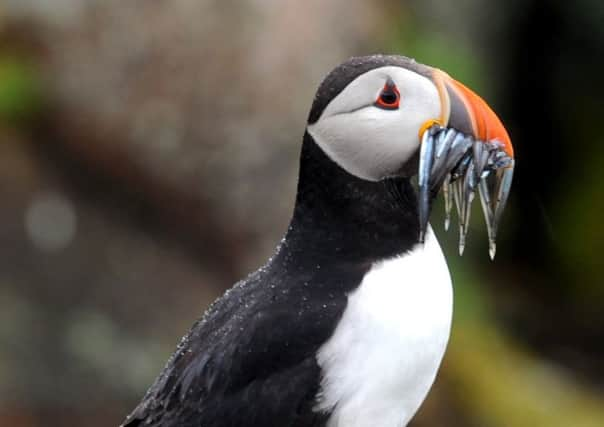Fair Isle observatory fire: Support for community is crucial – Martyn McLaughlin


For those who do not wake each morning enlivened by the prospect of glimpsing a Moltoni’s warbler, Tawney pipit, or even a humble greater short-toed lark scurrying into view on the back of a light south-westerly, it is difficult to appreciate the devastating repercussions of the fire which has destroyed the bird observatory on Fair Isle.
Over the course of seven decades, its guardians have dutifuly recorded daily census counts of the feathered visitors who stop off at Britain’s most remote inhabited island, seeking respite from their momentous migratory journeys.
Advertisement
Hide AdAdvertisement
Hide AdTheir fleeting appearances have not only brought joy to generations of twitchers, they have helped cement Fair Isle’s reputation as a centre of internationally significant scientific research. The observatory’s precious data serves as a baseline which helps to inform our understanding of seismic issues which are reshaping the world around us, such as seabird migration, marine pollution, and climate change. It is questionable whether even a man as visionary as George Waterston could have foreseen the impact he would make when he established the observatory just three years after the end of the Second World War.
Waterston laid the foundations for a world-class resource which gave rise to the same calibre of research. Drawing on extensive records, scientists and researchers who followed in his footsteps have been able to show, for example, how the number of breeding puffins on Fair Isle has halved in 30 years.
As Roy Dennis, honorary president of the trust behind the observatory, astutely observed in the fire’s aftermath: “That 70 years of recording is teaching us about what’s happening to the world in the present time.”
Fortunately, the observatory’s priceless data has been digitised and will go on to inform research the world over. Even so, the loss of the physical building is a monumental blow in a place like Fair Isle.
The observatory served a specific goal and clientele, yet it could never have been characterised as separate from the rest of the island. In a place which spans just three miles long by one-and-a-half miles wide, it was inextricably linked to all else around it.
The centre long served as the backbone of the island’s brittle economy. The blunt reality is that as well as being a scientific hub, it was also the largest accommodation provider on the island, with the vast majority of its £250,000 annual income generated by providing beds for the night.
So too it was Fair Isle’s only high-profile tourist attraction, and one of its largest employers. On an island that has struggled over the years to maintain its working-age population, the importance of that cannot be overstated.
Cumulatively, these factors also fulfilled a crucial social function in such a small place. Many of those who were drawn to the observatory by a love of birds found themselves meeting kindred spirits, falling not only for them, but Fair Isle itself.
Advertisement
Hide AdAdvertisement
Hide AdIn its very first season, one of the observatory’s domestic helps, a young Faroese woman by the name of Kristina Djurhuus, fell in love with William Mathieson, a local lighthouse keeper. Come the summer of 1950, the couple were married, with the bride’s family travelling south by trawler for the ceremony. The wedding cake featured a lighthouse flagpole with miniature Faroese flags. Countless others have followed a similar path over the years. Ann Cleeves, the successful crime author, met her husband, Tim, a visiting ornithologist at the observatory while she was working there as an assistant cook.
The couple later left for pastures new, but Ms Cleeves has gone on to celebrate the island in her fiction. As she astutely observed in the aftermath of the fire, the loss of the observatory – even if it is only temporary – will not just be bemoaned by twitchers, but will have “huge implications for the isle in many ways”.
Waterston, one of Scotland’s great conservationists, knew fine well the wider significance of the observatory all those years ago, as evidenced in one of the documents he penned as a prisoner of war in Bavaria. “The primary idea underlying the entire scheme is the resuscitation of the economic life of the island,” he observed. “The island could be restored to a happy thriving community where the young people would feel assured of a definite future living on the island.”
The observatory doubtless made life more secure, though the people of Fair Isle will be the first to tell you that there is no guarantee of a definite future. That promise looks even less certain now.
Hopefully, the cost of the rebuilding operation – to say nothing of the vast logistical operation required to bring the building materials to the island – will be met in full by insurers. But the arduous task of re-establishing the observatory must go hand in hand with support for the community with which it is co-dependent.
Already, the people of Fair Isle have launched a crowdfunding campaign for the family of David Parnaby, the observatory’s warden, who have been left homeless by the fire. At the time of writing, it had raised nearly £18,000 in less than 24 hours, money that will help them buy clothing, bedding, and in time, the likes of furniture and toys for their young children. The islanders’ indomitable spirit and resolve is to be applauded. But more importantly, it must be supported.
